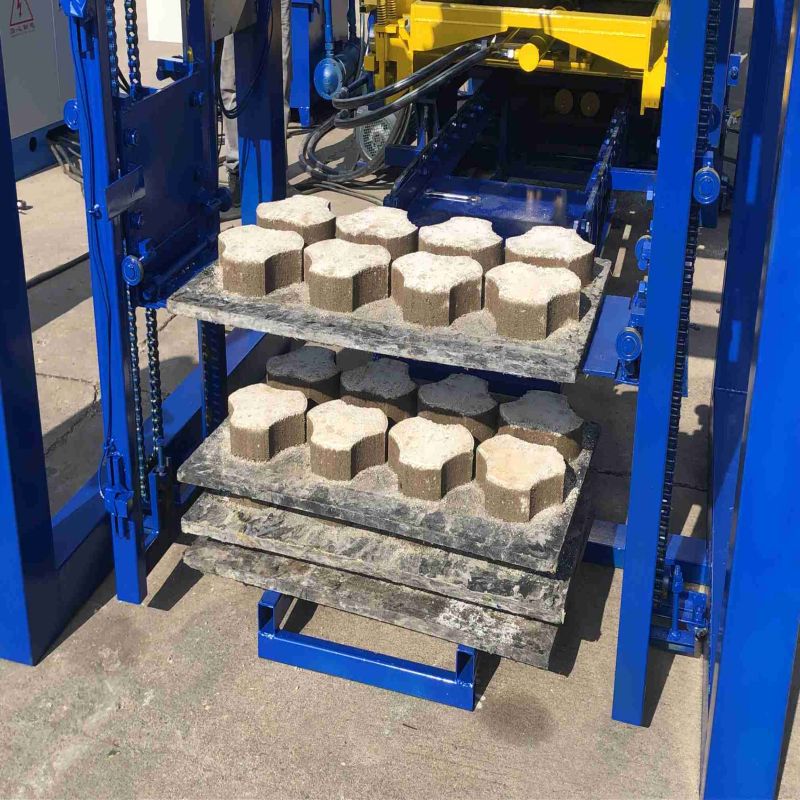
Image source:Aiwei block machine
Introduction
The brick making industry in Kenya plays a vital role in the country’s construction landscape, providing essential building materials for residential, commercial, and infrastructure projects. However, like any sector, the brick making industry faces a range of challenges that can impact production, quality, and overall sustainability. This article delves into some of the key challenges faced by the brick making industry in Kenya and explores potential solutions to address these challenges.
1. Raw Material Availability and Quality
Challenge: One of the primary challenges in the brick making industry is the availability and quality of raw materials, particularly clay. As urbanization and construction projects increase, the demand for clay surpasses its natural replenishment rate, leading to environmental degradation and soil depletion. Additionally, inconsistent clay quality can affect brick strength and durability.
Solution: To address this challenge, brick makers can explore alternative raw materials such as stabilized soil, fly ash, or quarry dust. These materials can reduce the strain on clay resources while maintaining or even improving brick quality. Moreover, investing in research and development to optimize material blends can lead to more sustainable and resource-efficient brick production.
2. Environmental Impact and Sustainability
Challenge: Traditional brick production methods can have adverse environmental impacts, including deforestation for firing kilns, air pollution from fuel combustion, and excessive water consumption. These practices contribute to climate change and environmental degradation.
Solution: The brick making industry can adopt more sustainable practices such as using energy-efficient kilns, embracing solar-powered firing technology, and implementing water recycling systems. Additionally, the incorporation of eco-friendly raw materials reduces the environmental footprint of brick production.
3. Access to Capital and Financing
Challenge: Many small-scale brick makers in Kenya face challenges in accessing capital and financing to invest in modern brick making machinery and technology. Limited financial resources hinder their ability to upgrade production methods and improve product quality.
Solution: Government agencies, financial institutions, and non-governmental organizations can play a role in providing affordable loans, grants, or training programs for brick makers. Collaborative efforts can empower these entrepreneurs to modernize their operations, enhancing efficiency and product quality.
4. Technological Advancement and Training
Challenge: Keeping up with technological advancements can be challenging, especially for small-scale brick makers with limited technical knowledge. The lack of training and technical support can hinder the adoption of modern brick making technology.
Solution: Industry associations, educational institutions, and government bodies can organize workshops, seminars, and training programs to educate brick makers about the latest technological innovations. Providing access to technical experts and support networks can help bridge the knowledge gap and encourage the adoption of advanced practices.
5. Regulatory Compliance and Environmental Standards
Challenge: The brick making industry must adhere to various regulatory and environmental standards, such as emission limits, waste management, and land use regulations. Non-compliance can result in fines and operational disruptions.
Solution: Collaboration between brick makers and regulatory authorities is essential to develop industry-specific guidelines that balance environmental protection and economic viability. Government agencies can facilitate the adoption of cleaner production technologies and provide incentives for compliance.
6. Market Fluctuations and Demand
Challenge: The brick making industry in Kenya is influenced by market fluctuations and changes in construction demand. Oversupply or undersupply of bricks can lead to price volatility and affect the financial stability of brick makers.
Solution: Diversification of products, such as producing specialized bricks for specific applications or introducing value-added features like thermal insulation or eco-friendliness, can help brick makers differentiate themselves in the market. Collaboration with architects and builders to understand emerging construction trends can guide product development.
7. Waste Management and Recycling
Challenge: Brick production generates waste, including rejected bricks and excess raw materials. Improper waste management can lead to environmental pollution and resource wastage.
Solution: Implementing efficient waste management practices, such as recycling rejected bricks into aggregate for other construction materials or using excess raw materials in other industries, can minimize waste and contribute to a circular economy.
Conclusion
The challenges faced by the brick making industry in Kenya are complex and multifaceted, but they also present opportunities for growth, innovation, and sustainability. By embracing alternative raw materials, adopting eco-friendly practices, and leveraging technological advancements, the industry can overcome challenges and build a more resilient and thriving future. Collaborative efforts between government bodies, financial institutions, industry associations, and brick makers themselves are essential to navigate the path forward. As Kenya’s construction sector continues to evolve, addressing these challenges will not only contribute to the success of individual businesses but also shape the broader landscape of sustainable development in the country.
